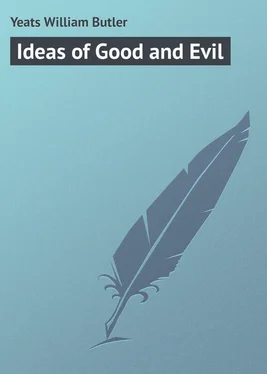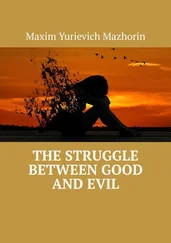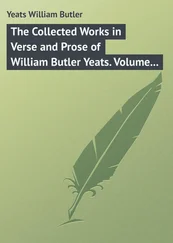William Yeats - Ideas of Good and Evil
Здесь есть возможность читать онлайн «William Yeats - Ideas of Good and Evil» — ознакомительный отрывок электронной книги совершенно бесплатно, а после прочтения отрывка купить полную версию. В некоторых случаях можно слушать аудио, скачать через торрент в формате fb2 и присутствует краткое содержание. Жанр: foreign_prose, на английском языке. Описание произведения, (предисловие) а так же отзывы посетителей доступны на портале библиотеки ЛибКат.
- Название:Ideas of Good and Evil
- Автор:
- Жанр:
- Год:неизвестен
- ISBN:нет данных
- Рейтинг книги:3 / 5. Голосов: 1
-
Избранное:Добавить в избранное
- Отзывы:
-
Ваша оценка:
- 60
- 1
- 2
- 3
- 4
- 5
Ideas of Good and Evil: краткое содержание, описание и аннотация
Предлагаем к чтению аннотацию, описание, краткое содержание или предисловие (зависит от того, что написал сам автор книги «Ideas of Good and Evil»). Если вы не нашли необходимую информацию о книге — напишите в комментариях, мы постараемся отыскать её.
Ideas of Good and Evil — читать онлайн ознакомительный отрывок
Ниже представлен текст книги, разбитый по страницам. Система сохранения места последней прочитанной страницы, позволяет с удобством читать онлайн бесплатно книгу «Ideas of Good and Evil», без необходимости каждый раз заново искать на чём Вы остановились. Поставьте закладку, и сможете в любой момент перейти на страницу, на которой закончили чтение.
Интервал:
Закладка:
VI
I once saw a young Irish woman, fresh from a convent school, cast into a profound trance, though not by a method known to any hypnotist. In her waking state she thought the apple of Eve was the kind of apple you can buy at the greengrocer’s, but in her trance she saw the Tree of Life with ever-sighing souls moving in its branches instead of sap, and among its leaves all the fowl of the air, and on its highest bough one white fowl bearing a crown. When I went home I took from the shelf a translation of The Book of Concealed Mystery , an old Jewish book, and cutting the pages came upon this passage, which I cannot think I had ever read: ‘The Tree, … is the Tree of the Knowledge of Good and of Evil … in its branches the birds lodge and build their nests, the souls and the angels have their place.’
I once saw a young Church of Ireland man, a bank clerk in the west of Ireland, thrown in a like trance. I have no doubt that he, too, was quite certain that the apple of Eve was a greengrocer’s apple, and yet he saw the tree and heard the souls sighing through its branches, and saw apples with human faces, and laying his ear to an apple heard a sound as of fighting hosts within. Presently he strayed from the tree and came to the edge of Eden, and there he found himself not by the wilderness he had learned of at the Sunday-school, but upon the summit of a great mountain, of a mountain ‘two miles high.’ The whole summit, in contradiction to all that would have seemed probable to his waking mind, was a great walled garden. Some years afterwards I found a mediæval diagram, which pictured Eden as a walled garden upon a high mountain.
Where did these intricate symbols come from? Neither I nor the one or two people present or the seers had ever seen, I am convinced, the description in The Book of Concealed Mystery , or the mediæval diagram. Remember that the images appeared in a moment perfect in all their complexity. If one can imagine that the seers or that I myself or another had indeed read of these images and forgotten it, that the supernatural artist’s knowledge of what was in our buried memories accounted for these visions, there are numberless other visions to account for. One cannot go on believing in improbable knowledge for ever. For instance, I find in my diary that on December 27, 1897, a seer, to whom I had given a certain old Irish symbol, saw Brigit, the goddess, holding out ‘a glittering and wriggling serpent,’ and yet I feel certain that neither I nor he knew anything of her association with the serpent until Carmina Gadelica was published a few months ago. And an old Irish woman who can neither read nor write has described to me a woman dressed like Dian, with helmet, and short skirt and sandals, and what seemed to be buskins. Why, too, among all the countless stories of visions that I have gathered in Ireland, or that a friend has gathered for me, are there none that mix the dress of different periods? The seers when they are but speaking from tradition will mix everything together, and speak of Finn mac Cool going to the Assizes at Cork. Almost every one who has ever busied himself with such matters has come, in trance or dream, upon some new and strange symbol or event, which he has afterwards found in some work he had never read or heard of. Examples like this are as yet too little classified, too little analyzed, to convince the stranger, but some of them are proof enough for those they have happened to, proof that there is a memory of nature that reveals events and symbols of distant centuries. Mystics of many countries and many centuries have spoken of this memory; and the honest men and charlatans, who keep the magical traditions which will some day be studied as a part of folk-lore, base most that is of importance in their claims upon this memory. I have read of it in ‘Paracelsus’ and in some Indian book that describes the people of past days as still living within it, ‘Thinking the thought and doing the deed.’ And I have found it in the prophetic books of William Blake, who calls its images ‘the bright sculptures of Los’s Halls’; and says that all events, ‘all love stories,’ renew themselves from those images. It is perhaps well that so few believe in it, for if many did many would go out of parliaments and universities and libraries and run into the wilderness to so waste the body, and to so hush the unquiet mind that, still living, they might pass the doors the dead pass daily; for who among the wise would trouble himself with making laws or in writing history or in weighing the earth if the things of eternity seemed ready to hand?
VII
I find in my diary of magical events for 1899 that I awoke at 3 A.M. out of a nightmare, and imagined one symbol to prevent its recurrence, and imagined another, a simple geometrical form, which calls up dreams of luxuriant vegetable life, that I might have pleasant dreams. I imagined it faintly, being very sleepy, and went to sleep. I had confused dreams which seemed to have no relation with the symbol. I awoke about eight, having for the time forgotten both nightmare and symbol. Presently I dozed off again and began half to dream and half to see, as one does between sleep and waking, enormous flowers and grapes. I awoke and recognized that what I had dreamed or seen was the kind of thing appropriate to the symbol before I remembered having used it. I find another record, though made some time after the event, of having imagined over the head of a person, who was a little of a seer, a combined symbol of elemental air and elemental water. This person, who did not know what symbol I was using, saw a pigeon flying with a lobster in his bill. I find that on December 13, 1898, I used a certain star-shaped symbol with a seeress, getting her to look at it intently before she began seeing. She saw a rough stone house, and in the middle of the house the skull of a horse. I find that I had used the same symbol a few days before with a seer, and that he had seen a rough stone house, and in the middle of the house something under a cloth marked with the Hammer of Thor. He had lifted the cloth and discovered a skeleton of gold with teeth of diamonds, and eyes of some unknown dim precious stones. I had made a note to this last vision, pointing out that we had been using a Solar symbol a little earlier. Solar symbols often call up visions of gold and precious stones. I do not give these examples to prove my arguments, but to illustrate them. I know that my examples will awaken in all who have not met the like, or who are not on other grounds inclined towards my arguments, a most natural incredulity. It was long before I myself would admit an inherent power in symbols, for it long seemed to me that one could account for everything by the power of one imagination over another, telepathy as it is called with that separation of knowledge and life, of word and emotion, which is the sterility of scientific speech. The symbol seemed powerful, I thought, merely because we thought it powerful, and we would do just as well without it. In those days I used symbols made with some ingenuity instead of merely imagining them. I used to give them to the person I was experimenting with, and tell him to hold them to his forehead without looking at them; and sometimes I made a mistake. I learned from these mistakes that if I did not myself imagine the symbol, in which case he would have a mixed vision, it was the symbol I gave by mistake that produced the vision. Then I met with a seer who could say to me, ‘I have a vision of a square pond, but I can see your thought, and you expect me to see an oblong pond,’ or, ‘The symbol you are imagining has made me see a woman holding a crystal, but it was a moonlight sea I should have seen.’ I discovered that the symbol hardly ever failed to call up its typical scene, its typical event, its typical person, but that I could practically never call up, no matter how vividly I imagined it, the particular scene, the particular event, the particular person I had in my own mind, and that when I could, the two visions rose side by side.
Читать дальшеИнтервал:
Закладка:
Похожие книги на «Ideas of Good and Evil»
Представляем Вашему вниманию похожие книги на «Ideas of Good and Evil» списком для выбора. Мы отобрали схожую по названию и смыслу литературу в надежде предоставить читателям больше вариантов отыскать новые, интересные, ещё непрочитанные произведения.
Обсуждение, отзывы о книге «Ideas of Good and Evil» и просто собственные мнения читателей. Оставьте ваши комментарии, напишите, что Вы думаете о произведении, его смысле или главных героях. Укажите что конкретно понравилось, а что нет, и почему Вы так считаете.












